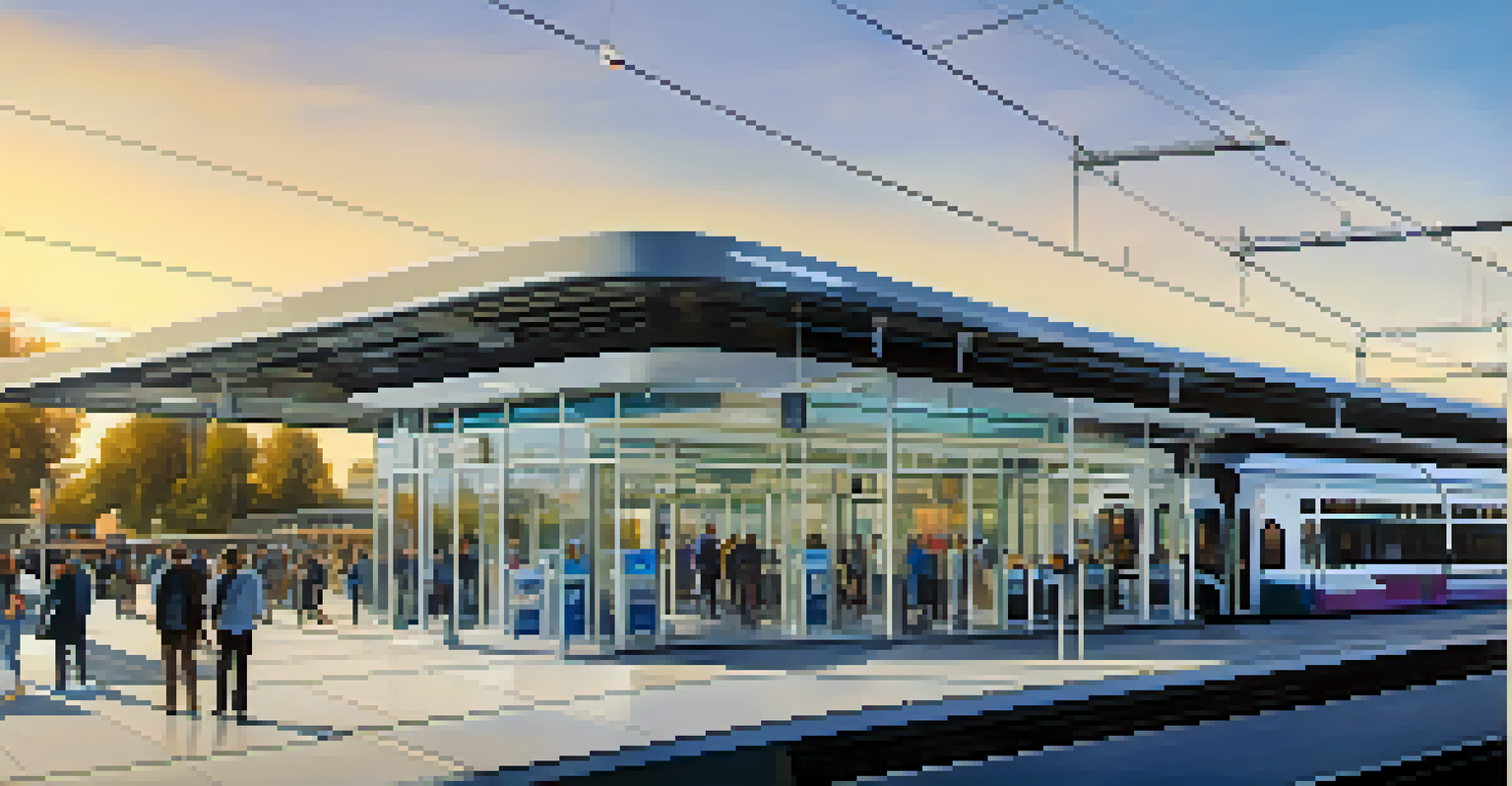Transportation in Sacramento: Growth and Development Over Time

The Historical Roots of Sacramento's Transportation System
Sacramento's transportation history dates back to its founding in 1849. Initially, the city relied on rivers and rudimentary roads to facilitate movement. The Sacramento River played a crucial role in transporting goods and people, making the city a vital hub during the Gold Rush.
Transportation is a vital part of our economy and our quality of life.
As the city expanded, the introduction of the railroad in the 1860s transformed transportation. Railroads connected Sacramento to other major cities, enhancing trade and travel. This development marked the beginning of a more structured transportation network that would evolve over the decades.
By the early 20th century, streetcars began to appear, providing residents with a reliable way to navigate the growing urban landscape. These innovations laid the groundwork for the complex transportation system we see today, demonstrating how Sacramento's history is intertwined with its transportation evolution.
Key Developments in Sacramento's Public Transit System
Over the years, Sacramento has made significant strides in developing its public transit system. In the 1970s, the Sacramento Regional Transit District was established to enhance bus and light rail services. This initiative aimed to reduce traffic congestion and promote sustainable transportation options.

Today, Sacramento boasts a robust public transit network that includes buses, light rail, and commuter services. With multiple routes connecting neighborhoods to downtown and surrounding areas, public transit serves as a lifeline for many residents. This accessibility encourages more people to leave their cars at home, reducing the city's carbon footprint.
Sacramento's Evolving Transit History
From its Gold Rush roots to modern public transit, Sacramento's transportation system has continuously adapted to meet the needs of its growing population.
Moreover, recent expansions and upgrades to the light rail system demonstrate Sacramento's commitment to improving public transportation. By investing in modern infrastructure and technology, the city not only enhances commuter experiences but also supports local economic growth.
The Role of Bicycles in Sacramento's Transportation Landscape
Bicycling has emerged as a popular mode of transportation in Sacramento, particularly in recent years. The city has prioritized creating bike-friendly infrastructure, with dedicated bike lanes and bike-sharing programs. This shift aligns with a broader goal of promoting eco-friendly transportation options.
The bicycle is a curious vehicle. Its passenger is its engine.
Sacramento's commitment to cycling is evident in its extensive network of bike paths and trails. The American River Bike Trail, for instance, offers a scenic route for cyclists while connecting various neighborhoods. Such initiatives encourage residents to consider biking as a viable alternative to driving, enhancing both health and sustainability.
Additionally, community events like Sacramento's 'Bike Month' further promote cycling culture. These initiatives not only celebrate biking but also educate the public on the benefits of using bicycles for commuting and recreation, fostering a sense of community and encouraging a healthier lifestyle.
Challenges Facing Sacramento's Transportation System
Despite its advancements, Sacramento's transportation system faces several challenges. Traffic congestion remains a significant issue, particularly during peak hours. As the city continues to grow, the demand for efficient transportation solutions becomes increasingly urgent.
Another challenge is ensuring equitable access to transportation for all residents. Low-income neighborhoods often lack sufficient public transit options, making it difficult for residents to access jobs and essential services. Addressing these disparities is crucial for fostering a more inclusive transportation system.
Challenges in Transportation Access
Despite advancements, issues like traffic congestion and unequal access for low-income neighborhoods remain pressing challenges for Sacramento's transportation system.
Moreover, the impact of climate change poses a threat to Sacramento's transportation infrastructure. Rising temperatures and extreme weather events can affect road conditions and public transit reliability. Developing adaptive strategies to mitigate these risks is essential for maintaining a resilient transportation network.
Innovations Shaping the Future of Transportation in Sacramento
As technology continues to evolve, Sacramento is embracing innovative solutions to enhance its transportation system. The rise of ride-sharing services and electric vehicles presents new opportunities for residents. These options offer convenience and flexibility, aligning with the city's sustainability goals.
Moreover, Sacramento has started to explore smart transportation technologies. Implementing real-time tracking for public transit vehicles can improve commuter experiences by providing accurate arrival times. Such innovations not only streamline operations but also encourage more residents to utilize public transit.
Additionally, the city is investing in infrastructure to support electric vehicles. Expanding charging stations and incentives for EV ownership can reduce reliance on fossil fuels, contributing to a cleaner environment. These forward-thinking initiatives position Sacramento as a leader in modern transportation solutions.
Community Involvement in Transportation Planning
Community engagement is vital in shaping Sacramento's transportation future. Local residents are encouraged to participate in planning discussions and provide feedback on proposed projects. This collaborative approach ensures that the transportation system meets the diverse needs of the community.
Public forums and workshops allow citizens to voice their concerns and ideas. This input helps city planners understand the challenges residents face and develop solutions that address them effectively. By fostering a sense of ownership, the city cultivates a more engaged and informed populace.
Innovations for a Sustainable Future
Sacramento is leveraging technology and community input to enhance its transportation network, aiming for a more efficient and environmentally friendly system.
Moreover, partnerships with local organizations and advocacy groups amplify community voices. These collaborations help promote awareness of transportation issues and encourage broader participation in the planning process. Ultimately, this collective effort leads to a transportation system that reflects the community's values and aspirations.
The Vision for Sacramento's Transportation Future
Looking ahead, Sacramento aims to create a transportation system that is efficient, sustainable, and inclusive. The city's vision includes expanding public transit options and enhancing connectivity between neighborhoods. By prioritizing accessibility, Sacramento hopes to ensure that all residents can participate fully in their community.
Additionally, there is a strong focus on sustainability. Integrating green technologies and promoting alternative modes of transport like biking and walking will play a crucial role in reducing emissions. This commitment to environmental responsibility reflects the city's desire to foster a healthier future for all.

Ultimately, the vision for Sacramento's transportation future is one of collaboration, innovation, and community engagement. By working together, residents and city officials can create a transportation network that not only meets current needs but also anticipates future challenges and opportunities.